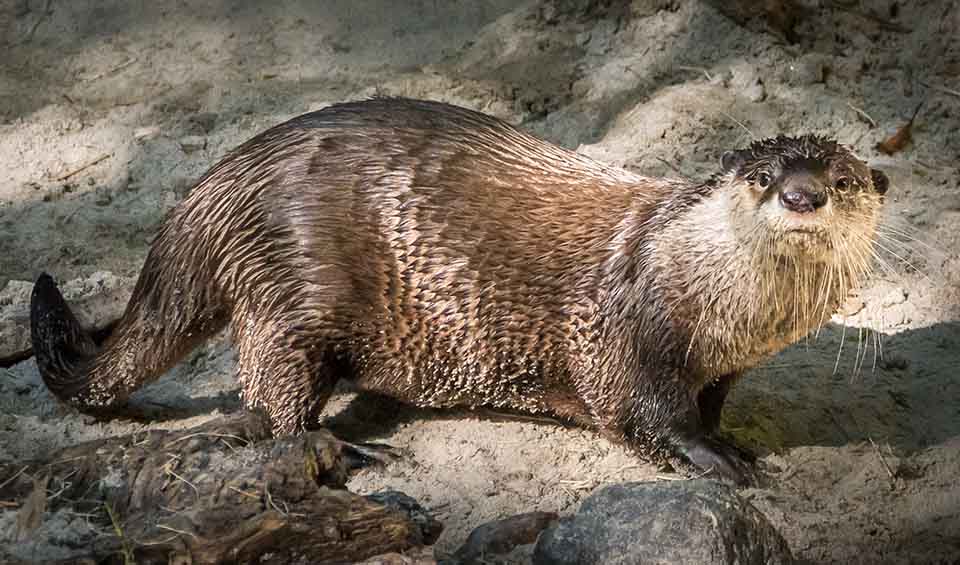The African Clawless Otter, a notable member of the otter family, stands out due to its significant size and unique physical adaptations. Native to the sub-Saharan regions of Africa, this species occupies a variety of freshwater habitats, from rivers and lakes to marshlands and coastal areas, showcasing its adaptability to different aquatic environments.
The African Clawless Otter is the second-largest freshwater otter species, following the giant otter. One of its most distinctive features is its dense, silky fur, which provides essential insulation. This adaptation is vital for maintaining body heat in aquatic environments, where temperatures can vary significantly. Unlike many of their otter relatives, the African Clawless Otters have partially webbed and entirely clawless feet, an adaptation that, while seemingly counterintuitive, does not impede their swimming efficiency. Instead, their strong, muscular tails serve as powerful rudders, allowing for agile and effective navigation through water.
African Clawless Otters exhibit crepuscular behavior, being most active during dawn and dusk. This timing strategy allows them to exploit their aquatic environments optimally while avoiding the peak hours of potential predators and human activity. Their daily routines include foraging, hunting, swimming, sunbathing, and engaging in playful behaviors, which are crucial for social bonding and skill development, especially among young otters.
Their diet is varied, primarily consisting of fish, which they skillfully catch using their sensitive whiskers and dexterous forefeet. Additionally, they consume a range of other aquatic animals, birds, eggs, insects, worms, and occasionally, a small amount of plant matter. After feeding, these otters exhibit meticulous grooming behaviors, using their forefeet to clean their faces, which is critical for maintaining the insulating properties of their fur.
Distribution
 Angola
Angola Benin
Benin Botswana
Botswana Burkina Faso
Burkina Faso Cameroon
Cameroon Chad
Chad Côte D’ivoire
Côte D’ivoire DR Congo (Kinshasa)
DR Congo (Kinshasa) Eritrea
Eritrea Eswatini
Eswatini Ethiopia
Ethiopia Gambia
Gambia Ghana
Ghana Guinea-Bissau
Guinea-Bissau Guinea
Guinea Kenya
Kenya Lesotho
Lesotho Liberia
Liberia Malawi
Malawi Mozambique
Mozambique Namibia
Namibia Niger
Niger Nigeria
Nigeria Rwanda
Rwanda Senegal
Senegal Sierra Leone
Sierra Leone South Africa
South Africa Sudan
Sudan Tanzania
Tanzania Uganda
Uganda Zambia
Zambia Zimbabwe
ZimbabweAnything we've missed?
Help us improve this page by suggesting edits. Glory never dies!
Suggest an editGet to know me
Terrestrial / Aquatic
Altricial / Precocial
Polygamous / Monogamous
Dimorphic / Monomorphic
Active: Diurnal / Nocturnal
Social behavior: Solitary / Pack / Herd
Diet: Carnivore / Herbivore / Omnivore / Piscivorous / Insectivore
Migratory: Yes / No
Domesticated: Yes / No
Dangerous: Yes / No




